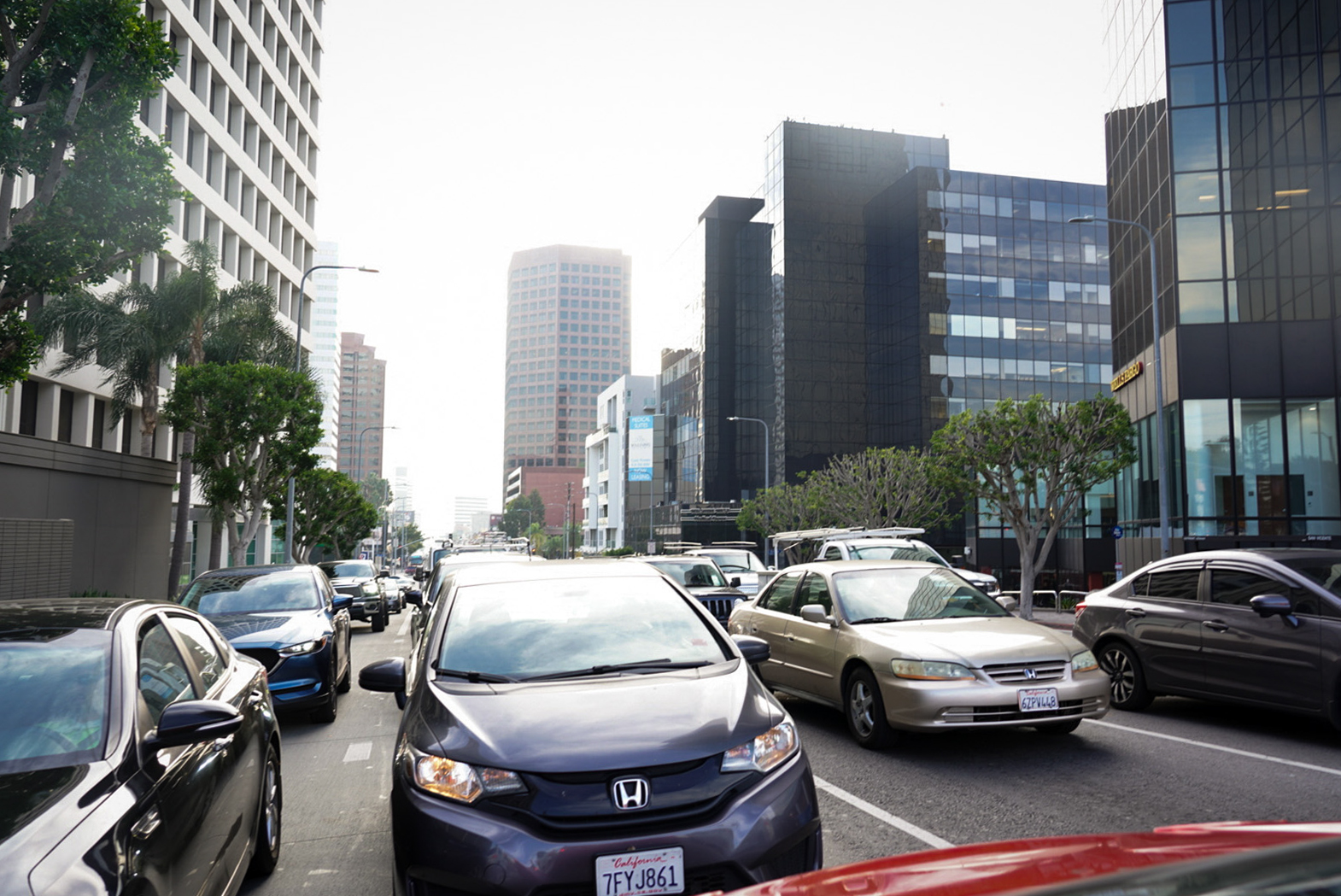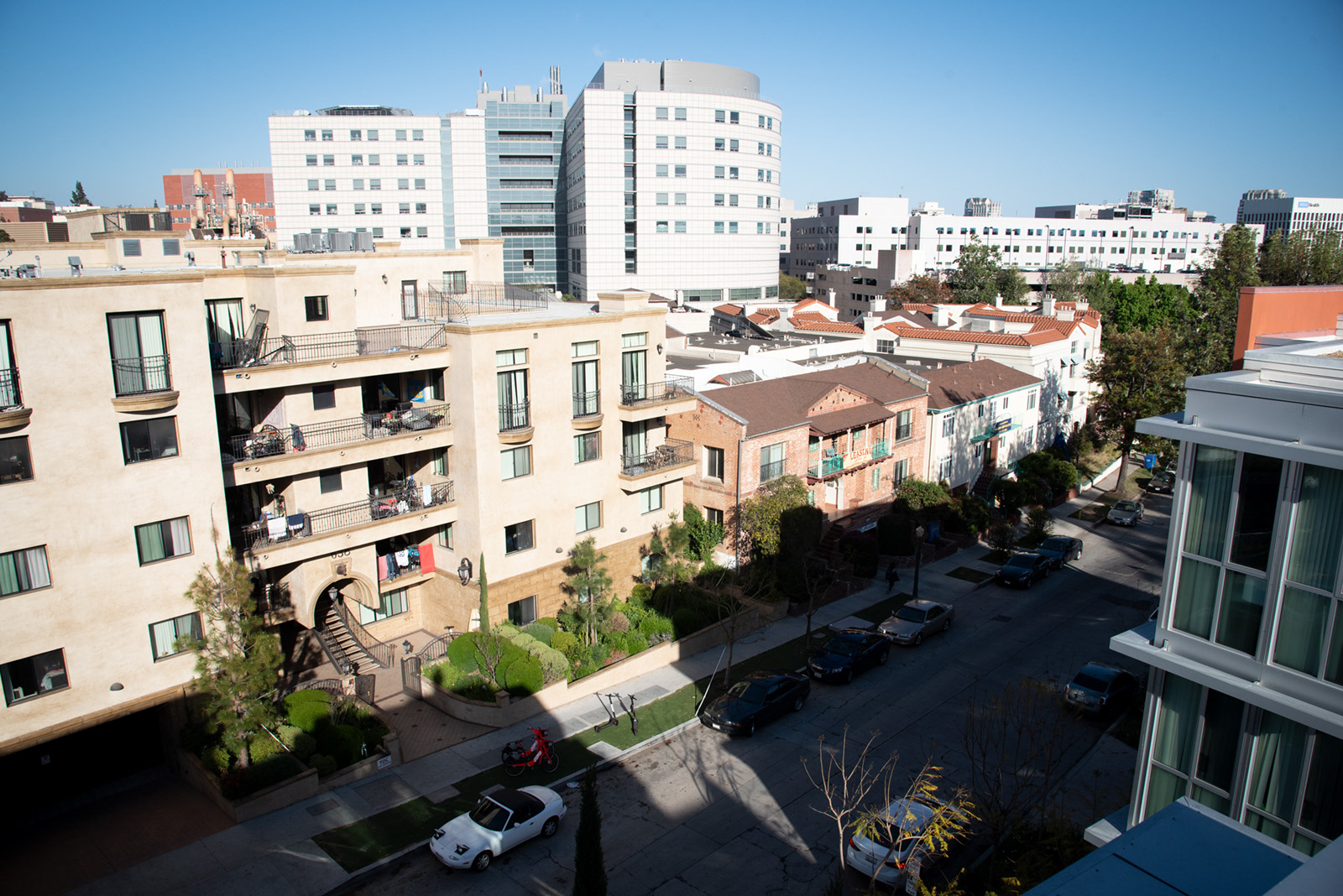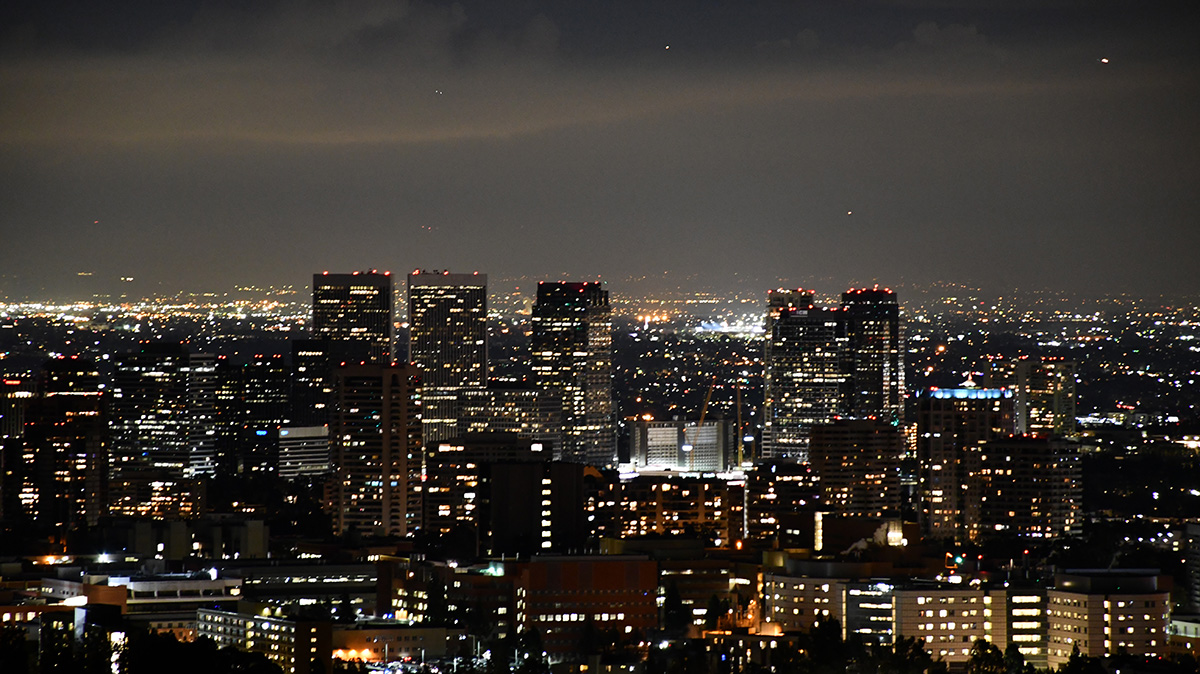California assembly bill allows establishment of speed safety system pilot in LA

Pictured are cars in Los Angeles. Gov. Gavin Newsom signed Assembly Bill 645 on Oct. 13, which authorizes the installation of speed safety camera systems in Los Angeles. (Daily Bruin file photo)
By Gabby Jamall
Oct. 18, 2023 5:22 p.m.
This post was updated Oct. 19 at 11:04 p.m.
A new bill signed by Gov. Gavin Newsom on Oct. 13 authorizes the installation of speed safety camera systems in Los Angeles.
Assembly Bill 645 was first introduced to the Assembly in February to permit the establishment of the speed safety system pilot program. The bill lays out six cities, including LA, that will have speed safety systems, which the bill defines as radar, laser or other electronic devices that can be fixed or adjustable and will automatically detect speeding and capture pictures of the violator’s license plate.
The bill states that on their first violation of the speed limit, offenders will receive a warning notice. After this first warning, violation fines will be handed out if one is caught speeding 11 mph or more over the posted limit. However, the bill specifies that during the first 60 days of the program, violators will only receive warnings.
Speeding is one of the primary factors in most crashes, necessitating immediate action to find solutions to this problem, said Damian Kevitt, the executive director of Streets Are for Everyone, a nonprofit organization dedicated to reducing traffic violence. Kevitt added that although improving road infrastructure is a potential solution, the process is lengthy, so he advocates a faster solution centered around traffic law enforcement.
“You have to look at it from a multifaceted way,” Kevitt said. “There’s other avenues as well, but enforcement is a factor.”
Automated systems of speed detection have been used in several other cities across the United States and have proven effective at reducing fatal car crashes by as much as 71%, according to a National Transportation Safety Board report.
Michael Manville, a professor in urban planning at the Luskin School of Public Affairs, said speed cameras have more success in discouraging speeding in comparison to the traditional method of traffic enforcement by police officers.
“It’s (speed cameras are) a much more effective deterrent to dangerous behavior because the probability of being caught is so much higher,” he said.
According to the bill, the pilot program will only implement speed camera systems in designated jurisdiction zones, which include safety corridors, high-injury areas and school zones.
Jacob Wasserman, the research project manager for the UCLA Institute of Transportation Studies, said he would potentially also like to see systems put in place in parts of LA where pedestrians might feel too unsafe to walk because of traffic, even if these areas do not have high crash rates.
However, the bill has critics who worry about privacy and the prospect of hefty fines.
Kevitt said the bill is purposely designed with various safeguards against the threat of privacy infringement, including the prohibition of facial recognition software, as well as requirements to destroy evidence from cases after a set period of time.
AB 645’s language also specifies that any additional revenue gathered from the program is either put back into the program’s cost or will be used for other traffic safety measures.
Wasserman added that the bill’s main priority is to reduce traffic violence rather than generate revenue for the city.
“This is ideally about protecting lives and preventing injuries,” he said. “I’m sure the money might be put to good use in traffic improvements, but I don’t think that’s the point of it.”
Kevitt said the implementation of safety systems has led to questions about the impact on police departments. He added that a large portion of the opposition toward the bill has come from police unions who feel that the implementation of cameras might cause a loss in police jobs.
Manville said he doesn’t foresee the bill doing severe harm to police, as LAPD officers have various demands upon them beyond traffic enforcement.
“If LA police did nothing but speeding enforcement, the advent of cameras could potentially pose a threat to their livelihoods,” he said. “But I think the typical police department, police officer, does a lot of things, and it doesn’t seem like a huge potential impact in this case.”
Manville added that he’d like to see the implementation of speed camera systems in the Westwood area eventually as a way to cultivate a safer pedestrian-oriented environment.
Westwood Boulevard is considered to be on the city’s high-injury network, meaning it fits the criteria for the potential implementation of camera systems, according to the City of LA’s GeoHub.
Kevitt said with the bill’s passing, the transportation department will have to secure contracts and carry out community engagement processes in which residents in jurisdiction zones can provide feedback before any systems are put in place.
He added that a lot of effort has been put into ensuring the bill prioritizes equity while also not giving up its main mission to save lives.
“It’s been four years in the making of evolving and making this better and better, to the point where we really think we’ve got something that’s going to be a good balance,” Kevitt said.




